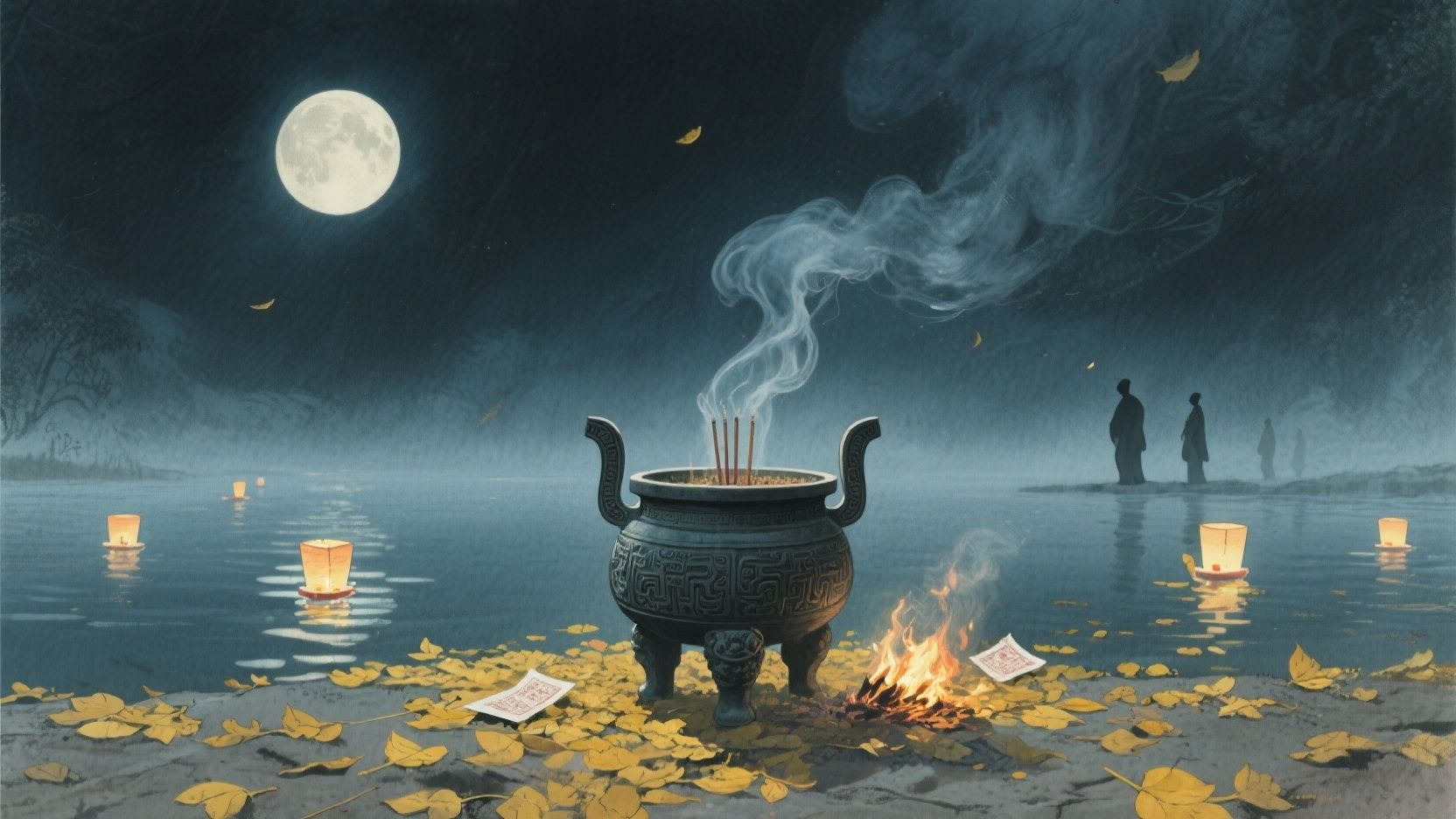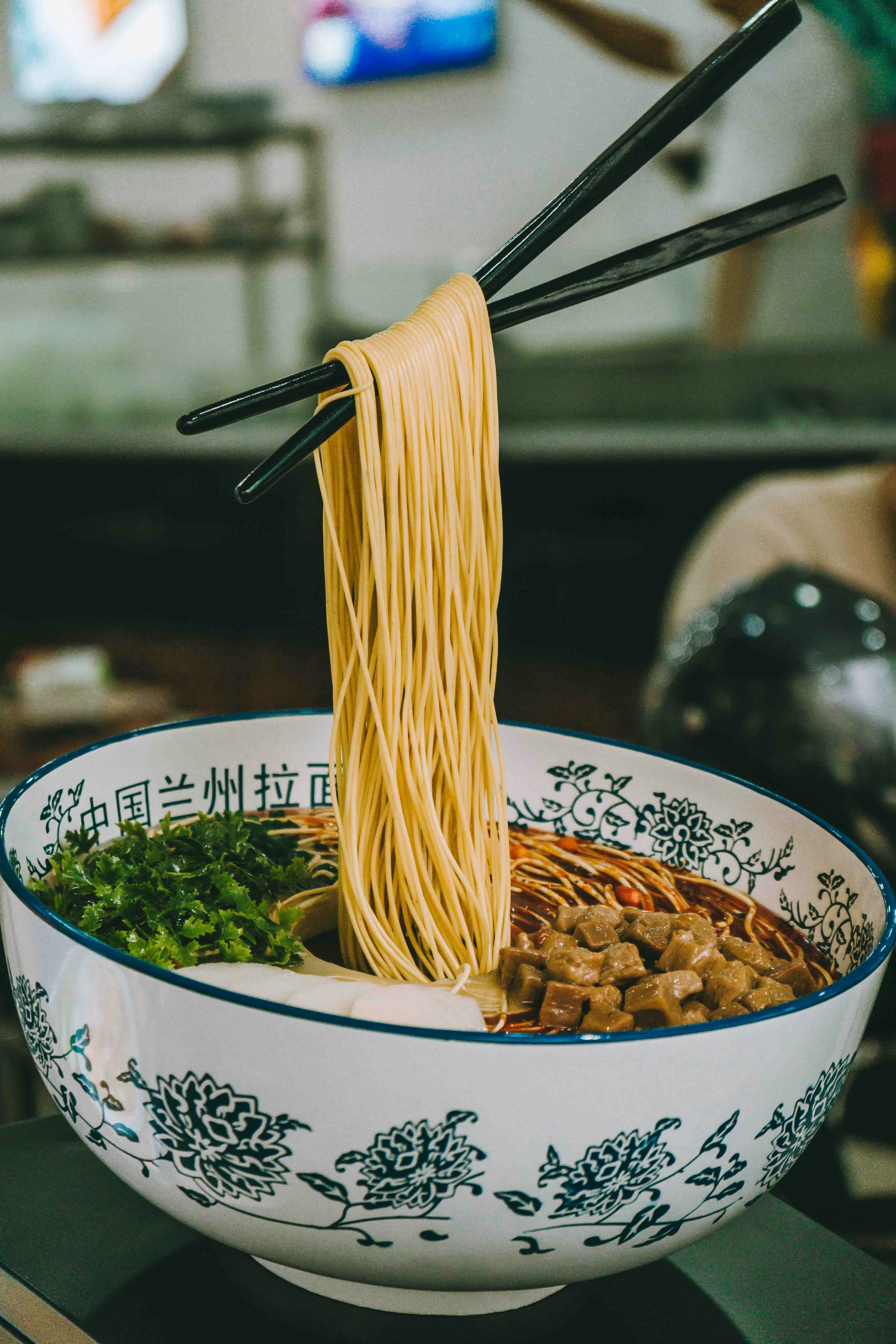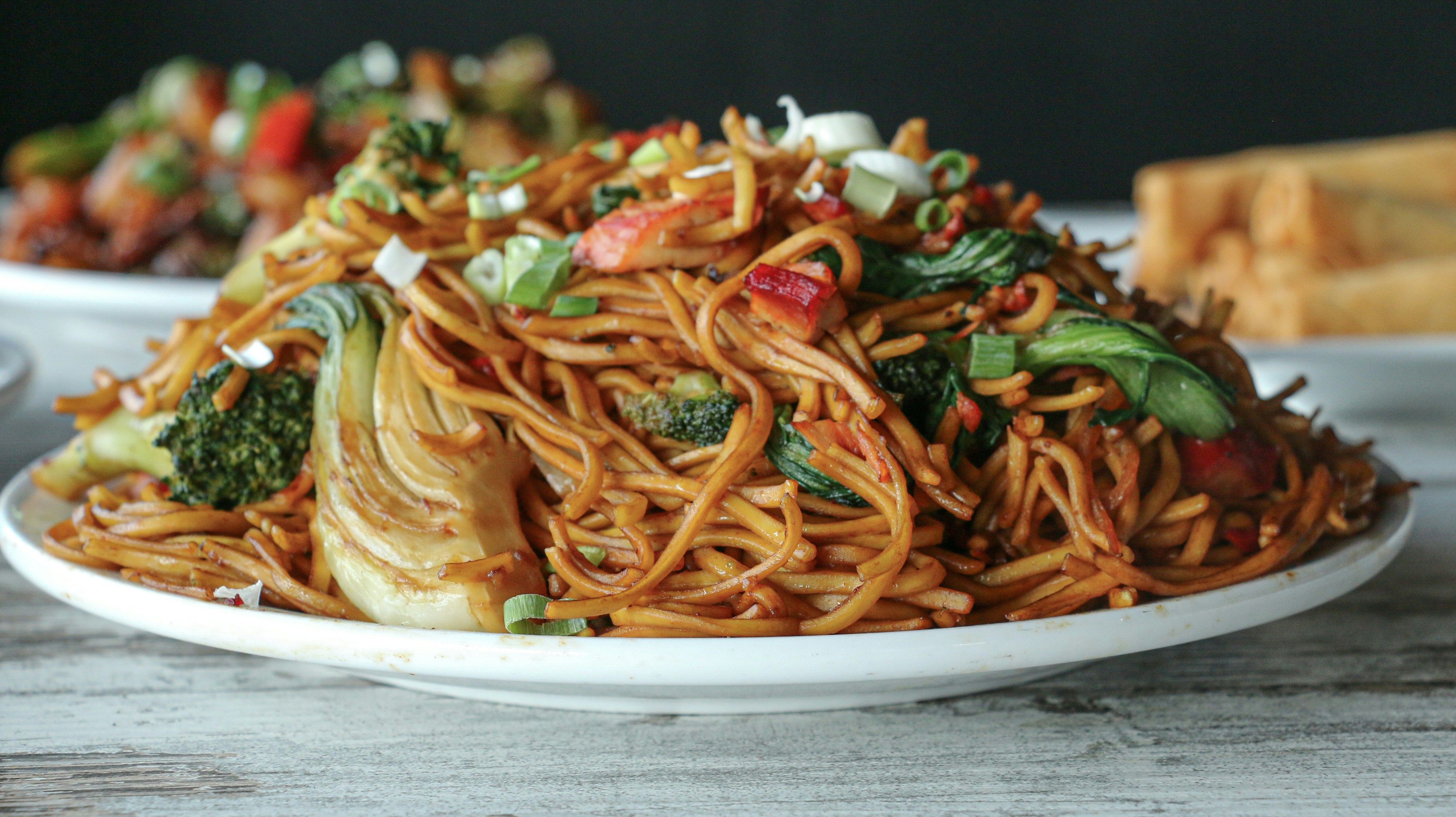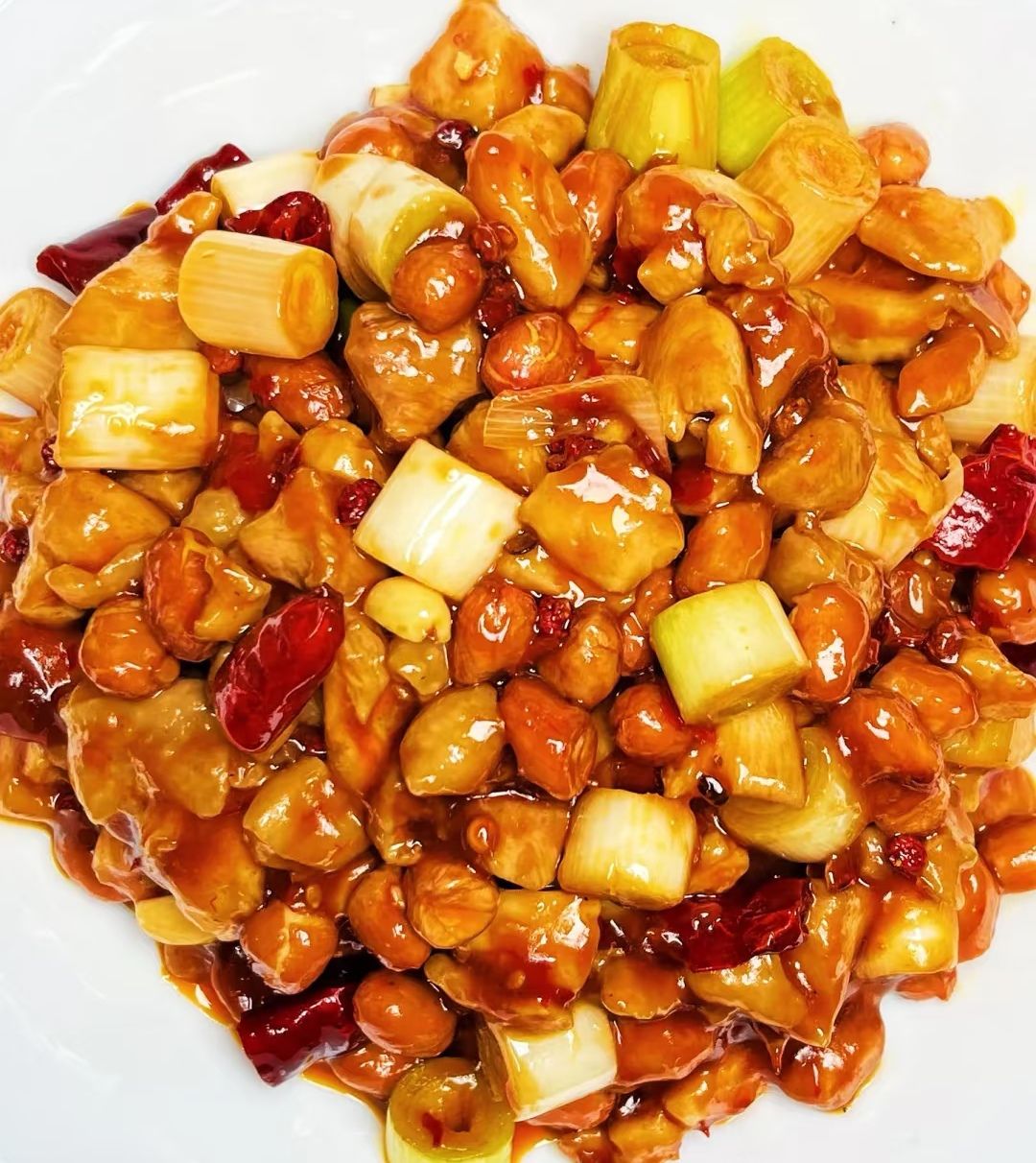Midnight Flavors: The Culinary Codes of Ancestral Veneration
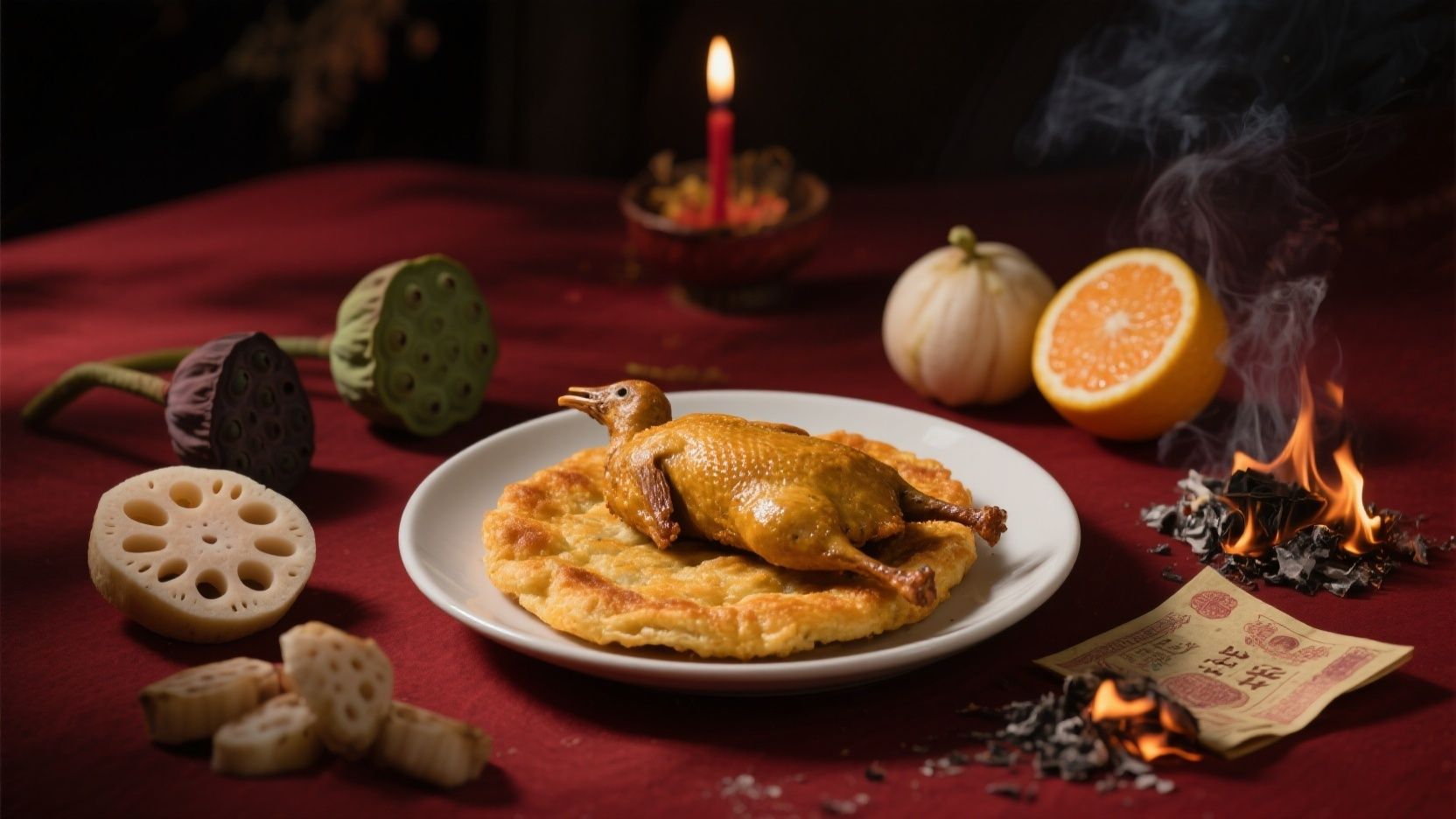
Prologue: Taste Memories in the Incense Smoke
On the midnight of the fifteenth day of the seventh lunar month, fishing lamps and river lanterns along the Yangtze form constellations, while steam from warm rice wine spirals upward with ash from burnt paper offerings. This feast bridging the realms of yin and yang—traced back to the Southern Dynasty’s Record of Seasonal Customs in Jing-Chu, which notes, "On the fifteenth day of the seventh month, monks, nuns, Daoists, and layfolk prepare basin offerings for the Buddhas"—has evolved over millennia. It melds Confucian ethics of filial piety, Daoist beliefs in the underworld, and Buddhist Ullambana rituals into a unique gustatory ceremony. In this liminal space where heaven and earth commune, the Chinese construct bridges between life and death through food, turning each symbolic culinary custom into a cipher for decoding cultural DNA.
Chapter One: Winged Messengers—Cosmology in Duck Cuisine
1.1 Avian Enigma: From Totem to Table
In the morning mist along the Yangtze, the flap of mallard wings pierces the Ghost Festival’s silence. Ducks—recorded among the "Six Fowl" in the Rites of Zhou—were imbued with spiritual power to traverse the yin-yang divide in ancient Chu shamanism, evidenced by duck-shaped handles on Warring States lacquerware unearthed in Hunan’s Yuanjiang basin. As Daoist "Three Originals" theory and Buddhist "Maudgalyāyana Rescues His Mother" lore fused in the Tang dynasty, ducks transformed from spirit intermediaries into apotropaic food. Stuffed with lotus seeds and barley—mirroring Daoist ritual talismans—they became edible guardians.
1.2 Cauldron Harmonies: Cosmic Order in a Pot
Suzhou chefs grasp this wisdom: A broth simmered six hours with aged Jinhua ham, Taihu water bamboo shoots, and Liyang chestnuts embodies Huainanzi’s principle of "yin-yang unity." Lingnan’s "Gold-Silver Duck" pairs roasted and poached birds, evoking the taiji symbol. In Hakka walled villages, duck-blood tofu is cut into eighty-one pieces—exactly matching the chapter count of the Daodejing. These covert rituals translate Daoist cosmology into edible grammar.
1.3 Gastronomic Anthropology: Duck Customs Across Borders
Nanjing’s osmanthus-salted duck honors ancestors with imperial exam symbolism ("plucking laurels from the moon"). Hakka migrants in Sichuan’s Luodai town preserve the Central Plains’ "Three-Rites Whole Duck"—blanched, steamed, and braised to embody heaven, earth, and humanity. Carried westward during migrations, these traditions birthed Chongqing’s spicy duck-head offerings—a fiery, saucy chapter of culinary diaspora.
Chapter Two: Dough Divinations—Fertility Rites in Starch
2.1 Fermentation Allegories: Nuwa’s Legacy
At 3 a.m. in Jiangxi hills, dough breathes in clay jars—a scene echoing Qu Yuan’s ancient query in Heavenly Questions: "Nuwa had a body; who fashioned it?" Hakka "child-seeking buns" bear lotus-seam imprints for Buddhist rebirth. In Shanxi’s Dai County, ritual bread-goats wear red strings, weaving Book of Rites ceremonialism into wheat’s aroma.
2.2 Filling Semiotics: Culinary Linguistics
Huizhou matriarchs encode meanings: long beans ("endless descent"), pork ("household"), dried shrimp ("smooth sailing"). Quanzhou’s "smiling bowl cakes" crack open to delight ancestors—linguistic wit descended from shamanic incantations. Modern nutritionists marvel at their protein synergy; ancients intuited it through practice.
2.3 Steam Cycles: From Hearth Gods to Tech
Shandong women time steaming by the Big Dipper—an astro-culinary practice from Han dynasty almanacs. Today, Suzhou Museum revives Song "pine-needle steam buns," while smart steamers hum nearby. Tradition and modernity reconcile in rising dough.
Chapter Three: Grain Threads—Chronotopes in Rice Noodles
3.1 Rice-Civilization DNA
In Dongguan, stone mills grind early-harvest rice into threads ("càn" in Qi Min Yao Shu)—a grain civilization’s tribute to forebears. Guangxi Zhuang offer nine-layer rice noodles for the nine heavens of creation myth; Chaozhou’s red-yeast noodles encode the I Ching’s seven-day cosmic cycle.
3.2 Noodle Odysseys
Maritime Silk Road ships carried rice noodles to Malacca, where Fujian migrants infused them with coconut milk. Thai-Chinese blends with basil and lemongrass birthed culinary hybrids—transmuted traditions, like Romanized letters on spirit-money.
3.3 Ritual Reboots
Shenzhen factories extrude noodles to 0.85mm ±2μm precision—industrial homage to "silver threads." Yet Dongguan masters still "moon-dry" batter to absorb lunar qi. Ancient customs evolve in double-helix spirals.
Epilogue: Gastronomy’s Modern Revelations
As drones replace river lanterns and app-candles flicker, Zhongyuan foodways endure. Michelin chefs deconstruct duck soup; bloggers 3D-print ritual buns. In Shunde’s food museum, AR revives Republican-era feasts. Here, virtual and real converge: Tradition is no museum specimen, but a flowing feast. Flavors freighted with mortality’s weight persist—finding new hosts in the human heart’s eternal longing.
